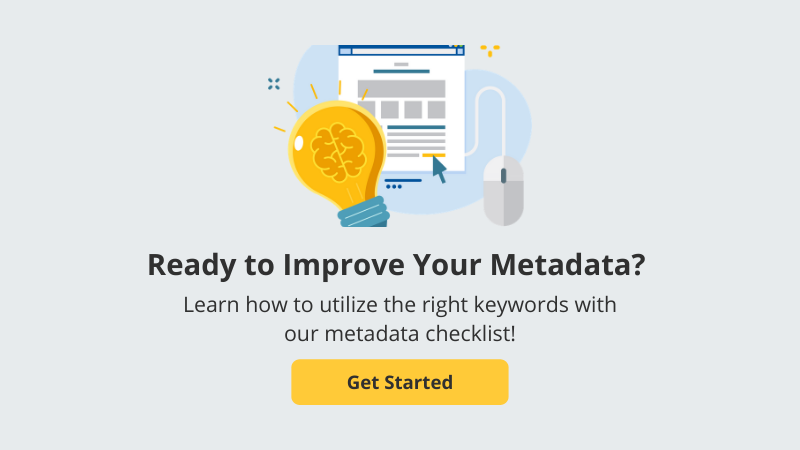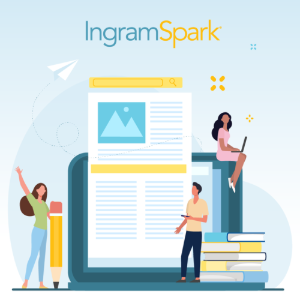Updated February 7, 2025
A crucial element of your book marketing and sales strategy needs to be making your book easy to categorize and discover. You achieve this with good book metadata. Successful self-publishers know how to incorporate as much quality metadata as possible into their publishing strategy, and while you don't have to include all of the following elements, consider incorporating those that are applicable to your book and your potential audience. Following are the metadata components that impact book sales most.
Take IngramSpark's FREE Online Self-Publishing Course on Optimizing Book Metadata
An Important Glossary of Terms
Before digging in, you need a working knowledge of some basic publishing terms:
- Metadata: Simply put, your book metadata is any data that describes your book—including title, subtitle, price, publication date, ISBN, and any other relevant information that readers use to find your book. Readers depend on good metadata to find their next read. Ultimately, it’s what connects your content to your prospective readers and is fondly referred to as your book’s “sales force”.
- Discovery: The process by which the perfect customer finds your book. Discovery is essential to making a sale, because readers can’t read a book they can’t find.
Metadata Describes Your Book
Your book metadata should be as descriptive as possible, including elements such as what genre the book fits into, who is telling the story, and keywords or information that will appeal to the intended audience. Specific descriptive information that includes terms like "beach read," "Italian cookbook," or "authoritative biography" will help put the book title on the radar of readers who are looking for a certain kind of book.
Online consumers unwittingly access book metadata when searching online, making your book easier to discover—including readers who already know an author's work as well as those who don't.
There is so much information that can be added to your metadata to help the right reader find your book, including:
- Important People and Brands: This includes popular historical characters who are gaining (or regaining) notoriety. However, they must be directly related to your book in order for you to include them. If the subject matter of your book relates to well-known people or institutions, use that in your metadata.
- Locations and Time Periods: Think about where and when your story is set. If your book is set against the backdrop of the civil rights era, you can improve online discovery of your book by referencing Martin Luther King or the '60s. Include historical events, times, and settings in your metadata description.
- Special Features and Selling Points Specific to an Edition or Format: A new foreword in your book—perhaps by a currently notable professional—can have an impact on book sales. You might also consider including selling points such as color illustrations, exclusive book cover design, and/or a unique binding.
- Additional Contributors: Any contributor to your book brings their own marketing success to yours. Information about illustrators, collaborators, and other contributors should be part of your book metadata. Information about co-authors and other contributors will increase the likelihood that a book will appear in multiple and varied searches.
- Audience or Age-Appropriateness: Naturally your book sales will be affected by whether your marketing reaches the right audience. Including or withholding age or grade-level recommendations in your book metadata will affect how well your book reaches its intended audience. Recommendations and/or blurbs from comparable authors can increase your sales. Consider your intended audience's behaviors, consumer habits, demography, and desires when writing your metadata.
Metadata Tells Librarians and Booksellers Where to Shelve Your Book
Including BISAC codes in book metadata explains what genre the book is. These codes assign categories to books that are standard throughout the publishing industry, allowing booksellers, librarians, online stores such as Amazon, and beyond to know where to shelve a book or how to locate it online. Use more than one BISAC code in the metadata. This will help ensure it reaches the targeted potential audiences. Use as many different BISAC codes for your book as your self-publishing platform allows and select options that are most relevant to your book. For example, if you wrote a romance, readers can't find it unless you've categorized it as "romance" in the BISAC code. It might also be considered "women's fiction" so you could also use that code. Don't stretch too far away from what your book is really about, though. Trying to sell your historical romance as straight history will help you lose readers, not gain them. Explore—don't exploit—opportunities to cross-promote.
Like BISAC codes, Thema subject codes are also a great metadata element for increased discoverability of your book. Thema is a classification system used to categorize books in the international markets. These subject codes offer a universal language that facilitates more efficient distribution, marketing, and discovery of books across global platforms and markets. For example, if your book is set in Paris and you want to target the French retail market, accurate Thema subject codes can help ensure your book is categorized appropriately in that market.
By harnessing the power of Thema subject codes, you can unlock new opportunities on a worldwide scale.
Thema consists of two elements: Subjects and Qualifiers
Thema Subjects identify the major categories of works, including genre(s), topic(s), and theme(s).- Examples:
-
- XQP: Graphic novel / Comic book / Manga: Traditional stories, myths, legends
- YFHH: Children’s / Teenage fiction: Historical fantasy
-
- Thema Qualifiers tell place, language, time-period, educational purpose, interest, and style.
- Examples:
- Place Qualifiers (1DDF-FR-LA: Paris, 1MBF: Australia)
- Time Period Qualifiers (3MN: 19th Century, 3MPQZ: 1990-1999)
- Examples:
For the best discovery, use multiple Thema Subject Categories and Qualifier categories.
These are all worth exploring to find what most accurately describes your book. As always, be specific.
Pick the Right Keywords
Identify and use the most relevant keywords and phrases that apply to your book. Consider what readers might search for if they were looking for a book like yours. Is it a children's book? What is it about? Select all the keywords and phrases that apply, but don't overdo it. You can test Google, Amazon, Yahoo, and other sites to get ideas simply by starting to type your search term into the search bar and seeing what search terms it starts to auto populate before you finish typing. Whatever your search engine suggests are the most popular search terms for your subject matter. This is a great place to start your keyword research because it's free. Provide keywords that can be easily incorporated into your book description, book title, author website, and beyond.
Here are a few tips that will help you know how to present your keywords when entering your book metadata into IngramSpark:
- Don't use quotes around your keywords.
- Include at least 7 to 10 keyword phrases in your metadata.
- Separate your keywords with a semicolon.
- Include the book's genre, e.g., sci-fi, essays, historical biography, romance fiction, literary fiction about philosophy.
- Include the period or era in which your novel takes place. An example would be Second World War and World War II.
- Use keyword phrases that describe your protagonist or another character in your book. Some examples are "divorced mom", "stay-at-home dad", "teenage drama", and "immigrant experience".
- See how Amazon uses keywords by performing a search in their Kindle section and looking at what else shows up in the drop-down menu. You might search for sci-fi, but note that other words such as "fantasy," "space opera," "utopian future," or something entirely unexpected shows up. Bingo! More keyword ideas for your metadata.
You should also consider updating your keywords from time to time in order to keep up with trends or when revising your book. You owe it to your book—and your bottom line—to use the right keywords in your metadata.
Write a Good Book Description
Your metadata should include an accurate, intriguing book description. This description is basically the quick-pitch for your book, so use the keywords you have used elsewhere in your book metadata. And don't be afraid to use available editing tools when writing book description metadata; the use of formatting such as bolded text and paragraph breaks, where appropriate, can give you an advantage when readers are conducting Google and Amazon searches. A book description is the most important aspect of conversion, turning discovery into a sale.
Consistency is Key
One mistake self-publishers make is—believe it or not—their name. If you use your middle initial or a hyphen in your author bio, spell it exactly the same way on your book cover. This creates more links to you and your book, and the more links there are, the more you and your book will appear in searches. Also, be careful not to misspell the title or alter it in any way from how it actually appears on your book. (It happens!) Use the same or similar keywords in your metadata that you use in other online promotional materials to create multiple instances of your book being the right fit for particular kinds of searches.
Optimize for Mobile Reading
Consider that many readers are looking for their next book on their tablets and phones, so make sure your book is mobile-friendly. That means you have to create a book cover and text format that translate to the small screen. You should preview covers and text on your own mobile devices before sending your book out into the world.
You want as many readers as possible to find your book—the right readers, that is—and good book metadata, coupled with great book marketing and your superb writing, will do the rest. Your book’s metadata is vital to your prospective customers discovering and connecting with your content. It might seem confusing at first but it's actually easy to learn and has a genuine impact on your book sales. Quality metadata can make the difference between achieving a sale or missing out on an opportunity to reach a reader.













